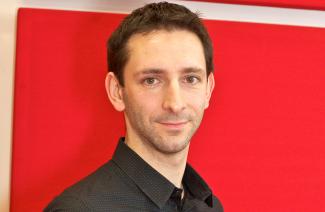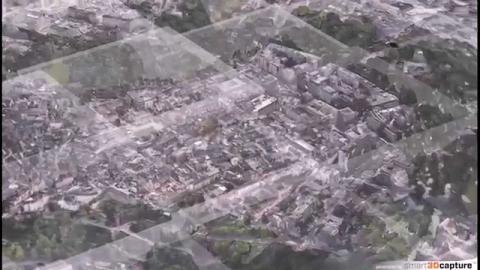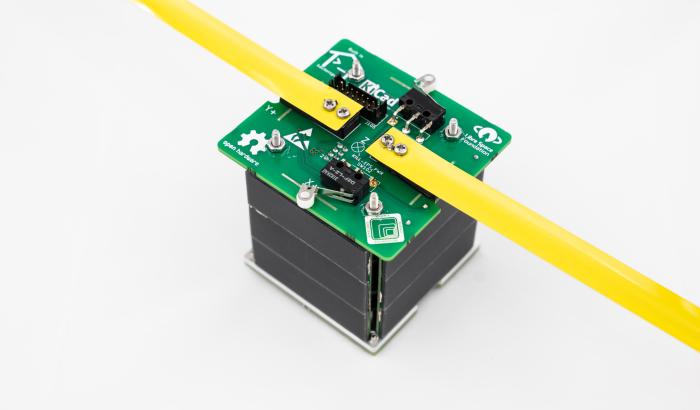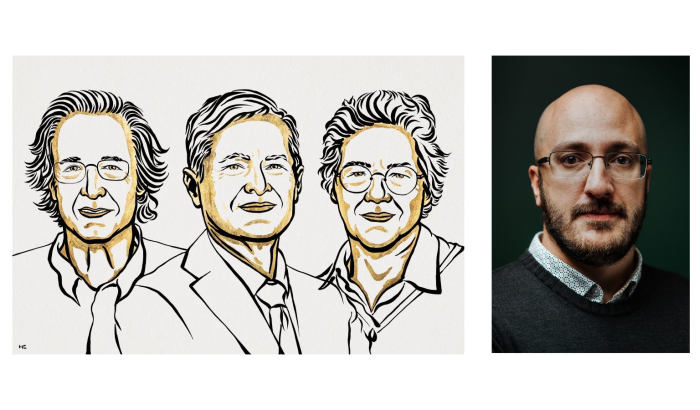
Sylvain Kubicki
The architect and computer scientist Sylvain Kubicki
In an article entitled “Beyond smart cities, welcome to resilient cities”, research engineer Sylvain Kubicki and his colleagues express their ideas of the challenges faced by cities in the future and how technology can help overcome some of the obstacles. They are experts in the field of construction, urban logistics, mobility and digital infrastructures. “We focus on the specific situation in Luxembourg”, Kubicki says, “looking at the actions which can be taken by policymakers with regard to climate change, buildings, wellbeing, the modelling of urban infrastructures and energy-management”.
Modelling the city of tomorrow
An architect by training with a PhD in computer science, Kubicki’s focus is on the modelling of buildings and districts, called Building Information Modelling (BIM). “BIM can for instance help providing better and more rapid energy assessments not only for buildings, but also for whole cities. Knowing the potential of cities for improvements can help making good decisions in terms of incentives and policies towards the tenants and the owners”, Kubicki says. Does this already make a smart city? Not yet, the researcher emphasizes: “BIM is not enough. We must also resolve issues in the construction domain like improving the collaboration between designers, constructors, owners and tenants of buildings. Modelling this knowledge and extending BIM to whole district systems is a challenge to address in order to ensure making the cities resilient.”
On the way to a sustainable future
“Our communities are facing a huge pressure from climate change associated to the growth of population, the conflicts in the world and else. Developing new, smart, methods to optimize the use of land spaces -down to the buildings’ areas- is crucial today. The required models look first at spaces, constructive geometry and material properties, but should also include soft parameters like the occupancy of space, the perception of occupants or the satisfaction of citizens. Once knowledge sources are handled consistently, one can use it to simulate and optimize systems. For instance, in our research projects we look at how to develop new urban districts patterns while engaging citizens. We are looking for ways to improve working conditions in new near-zero energy buildings while taking into account comfort and energy performance. Furthermore, we want to improve construction site productivity by optimizing construction sequences.”
Research-based decision-making
Obviously, there is a great interest by the professionals towards such new approaches, as Sylvain Kubicki reports, saying that stakeholders growingly have to justify the choices they make on scientific grounds. “That is the purpose today for gathering datasets in relation with the built environment and further analyzing it in order to simulate and predict the performance of buildings and districts in the planning of cities”. A good example is a new district being built in Esch-Schifflange, a former industrial site that stopped activity a decade ago.
Involving local stakeholders and citizens in the developing process
Like in Belval, where the new university was built, a new district is foreseen in Esch-Schifflange”, Kubicki reports. “At the moment, there are workshops and consultations with stakeholders, urban managers and researchers who are trying to find the most innovative solutions. We see that politicians, local authorities and developers are very keen and open to see what the innovations are and how a district should be designed today while involving the citizens. At LIST, we believe that Building Information Models scaled up at district level have a great potential in improving the development of such new districts while optimizing the planning options and enabling the participation of citizens. For instance, in a doctoral research project, we develop the methods and technologies able to empower citizens in the decision making process. Based on the constraints set by the urban planners, they can generate potential design solutions. Furthermore they should evaluate their performance with regard to environmental and usage concerns, and provide feedback.”
From academia to industry
At LIST, Kubicki and his colleagues guide the projects through a ‘Valley of Death’, where research from the universities can get stuck, by helping with requirements as well as guiding the training of practitioners. Hand-in-hand with industry, as Kubicki says, in order to find the best solutions for everyday problems. With regard to his own field, architecture, he is convinced that many of the advantages of BIM can in such a way be much better explored and he pleads for pushing them forward.
Author: Tim Haarmann
Photo: Sylvain Kubicki
Brief CV
Sylvain Kubicki is an architect by training. He did his PhD in computer science applied to architecture with a thesis entitled “Assisting flexible coordination of building construction”. Since 2007 he works at LIST in the “Digital Built Environment Management Unit”, part of LISTs “IT for Innovative Services department. His main focus at LIST is on digital models -including BIM (Building Information Modeling)- for the management of built environment -from buildings to districts for designing data-intensive smart services for cities.







